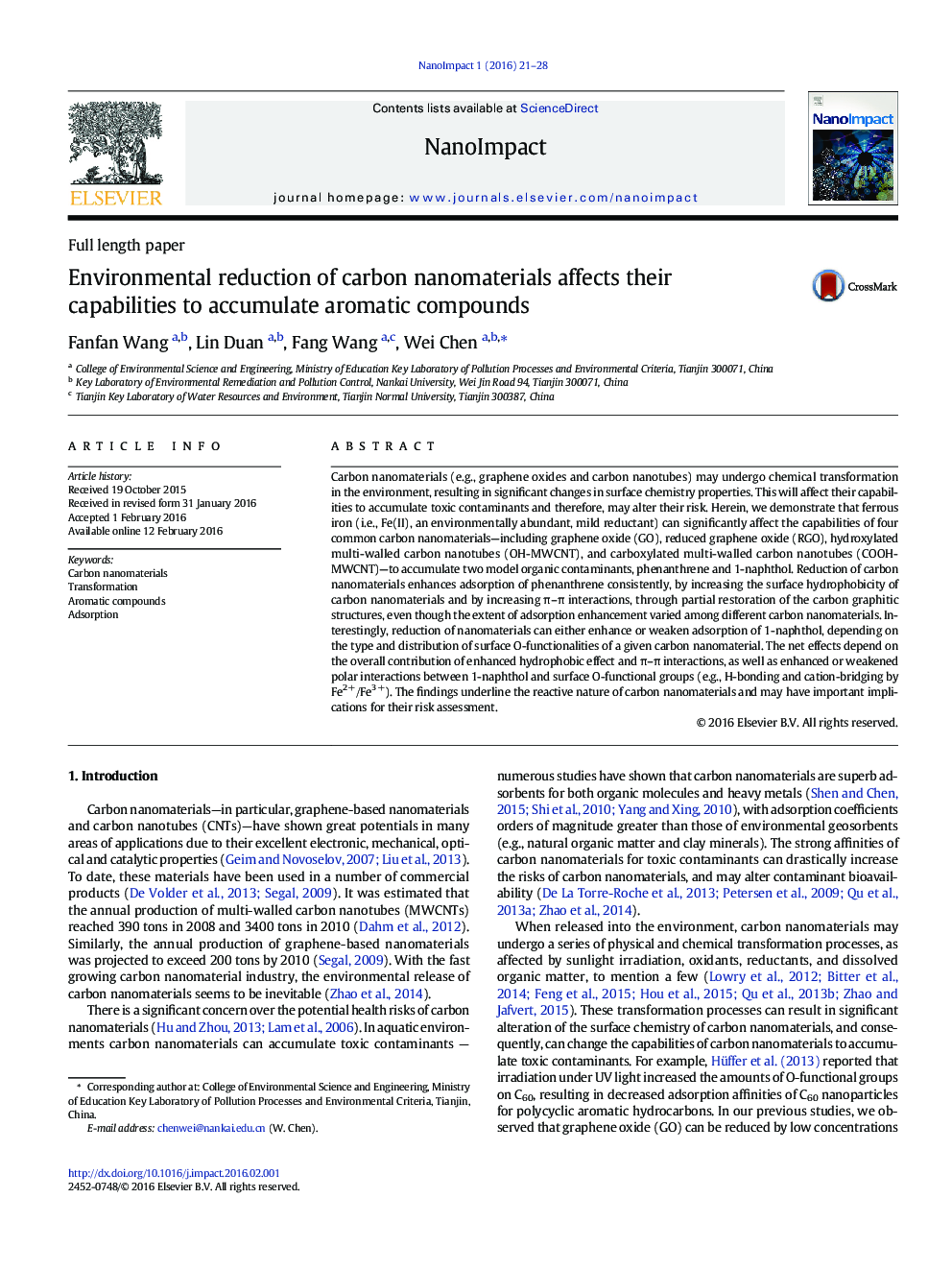| کد مقاله | کد نشریه | سال انتشار | مقاله انگلیسی | نسخه تمام متن |
|---|---|---|---|---|
| 2589390 | 1562025 | 2016 | 8 صفحه PDF | دانلود رایگان |
• Carbon nanomaterials (CNMs) can be reduced by low concentrations of Fe(II).
• Fe(II) reduction significantly affects CNM's affinity for aromatic compounds.
• Specific effects depend on type and distribution of CNM surface O-functionality.
• Results indicate that environmental transformation may significantly alter risks of CNM.
Carbon nanomaterials (e.g., graphene oxides and carbon nanotubes) may undergo chemical transformation in the environment, resulting in significant changes in surface chemistry properties. This will affect their capabilities to accumulate toxic contaminants and therefore, may alter their risk. Herein, we demonstrate that ferrous iron (i.e., Fe(II), an environmentally abundant, mild reductant) can significantly affect the capabilities of four common carbon nanomaterials—including graphene oxide (GO), reduced graphene oxide (RGO), hydroxylated multi-walled carbon nanotubes (OH-MWCNT), and carboxylated multi-walled carbon nanotubes (COOH-MWCNT)—to accumulate two model organic contaminants, phenanthrene and 1-naphthol. Reduction of carbon nanomaterials enhances adsorption of phenanthrene consistently, by increasing the surface hydrophobicity of carbon nanomaterials and by increasing π–π interactions, through partial restoration of the carbon graphitic structures, even though the extent of adsorption enhancement varied among different carbon nanomaterials. Interestingly, reduction of nanomaterials can either enhance or weaken adsorption of 1-naphthol, depending on the type and distribution of surface O-functionalities of a given carbon nanomaterial. The net effects depend on the overall contribution of enhanced hydrophobic effect and π–π interactions, as well as enhanced or weakened polar interactions between 1-naphthol and surface O-functional groups (e.g., H-bonding and cation-bridging by Fe2 +/Fe3 +). The findings underline the reactive nature of carbon nanomaterials and may have important implications for their risk assessment.
Figure optionsDownload as PowerPoint slide
Journal: NanoImpact - Volume 1, January 2016, Pages 21–28
